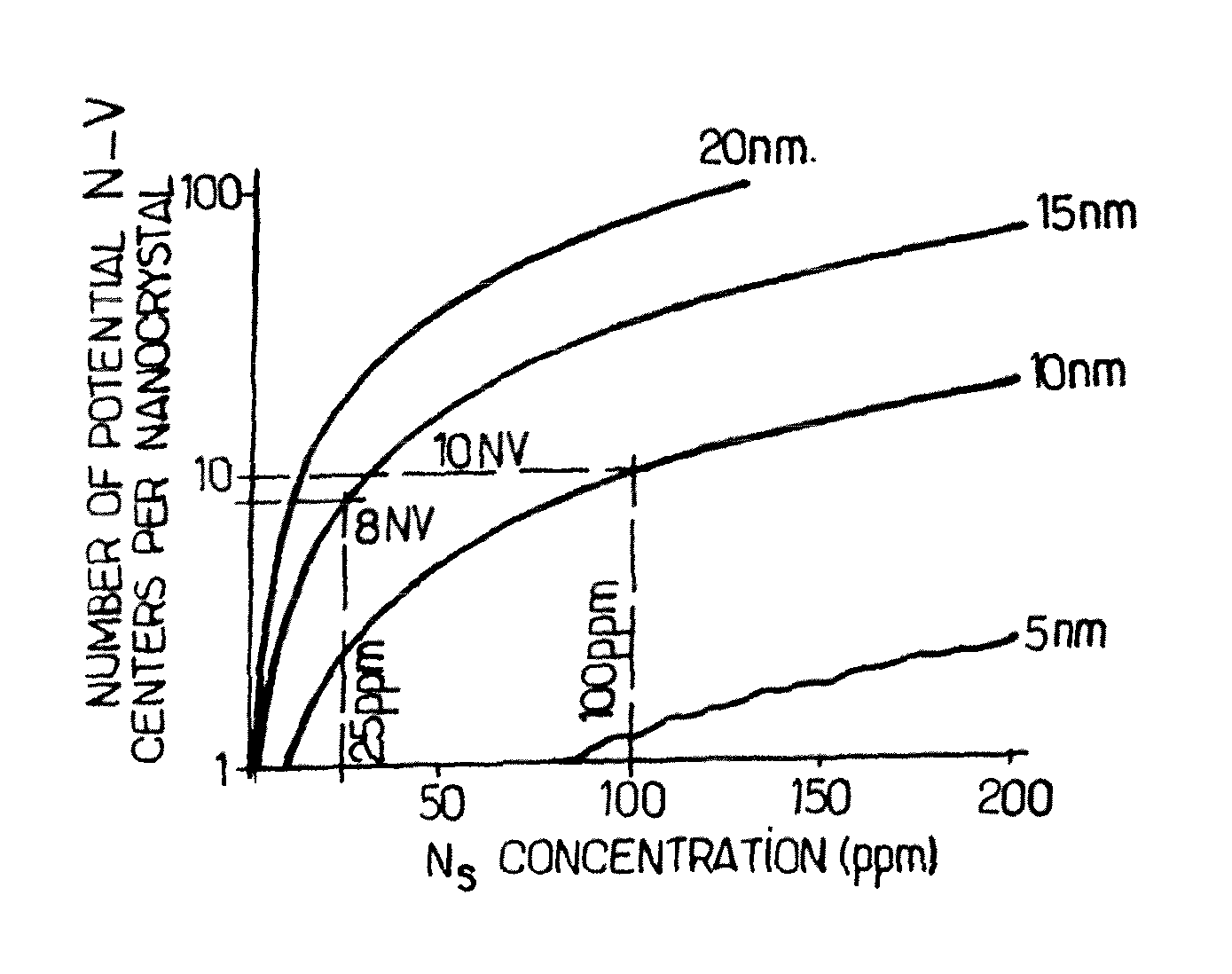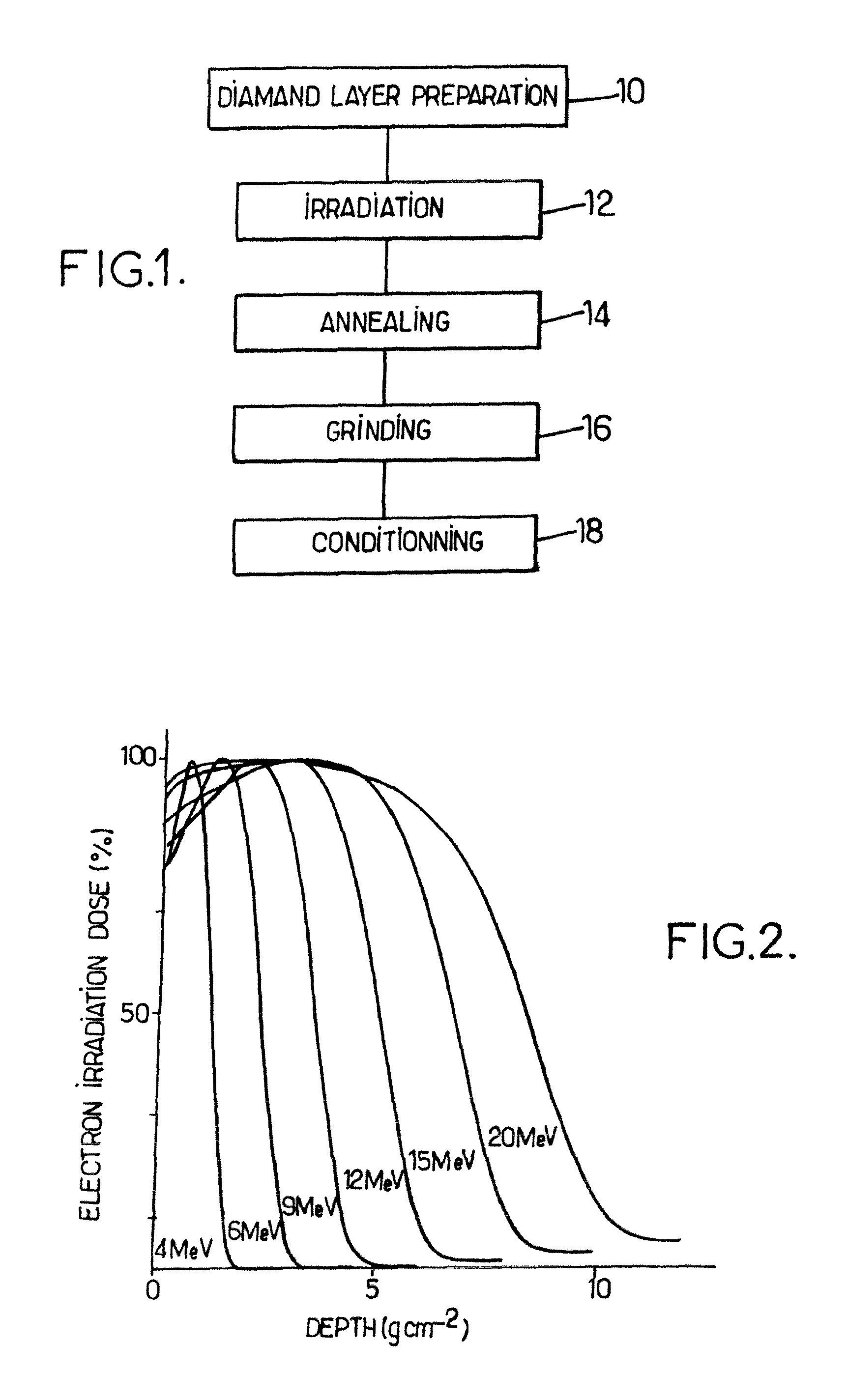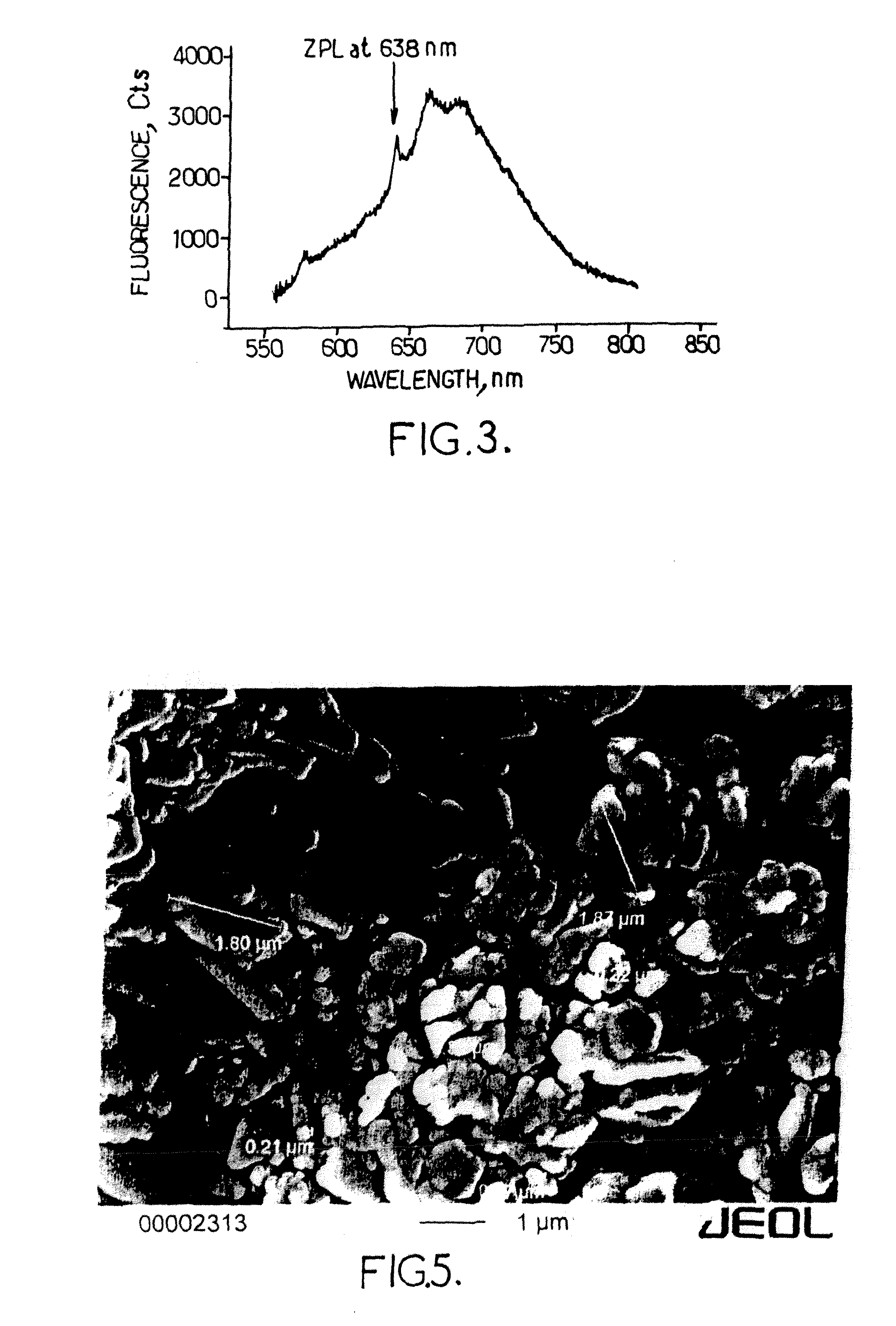Method to produce light-emitting nano-particles of diamond
a technology of diamond nano-particles and diamonds, which is applied in the field of light-emitting diamonds, can solve the problems of inefficiency of electron beams, inability to efficiently store electron beams at room temperature, and inability to achieve efficient shelving in a metastable state, so as to achieve advantageously better biological markers and higher density of light-emitting elements
- Summary
- Abstract
- Description
- Claims
- Application Information
AI Technical Summary
Benefits of technology
Problems solved by technology
Method used
Image
Examples
Embodiment Construction
[0028]In reference to FIG. 1, according to an embodiment of the invention, a box is filled up, at step 10, of diamonds of Ib type.
[0029]As mentioned previously, diamonds of Ib type are synthetic diamonds produced by high temperature high pressure (HPHT) process. Size of raw diamonds is superior to 0.1 micron—typically 80-100 meshes.
[0030]The box is made of aluminium alloy (e.g. Dural) or pylyimide (e.g. Vespel). The box equipped with a cooling system (flowing cold water) has a variable form which depends on the characteristics of the electron beam equipment which will be used to irradiate the diamonds. Typically, the container has a parallelepiped or toric form. The layer thickness is adjusted using the depth-dose profiles presented in FIG. 2, for a given beam energy and areal diamond density or depth—expressed in g cm−2.
[0031]As shown in FIG. 2, between 5 and 15 MeV, the stopping power in diamond, given by the Bethe-Bloch formula, increases from around 1.7 to 2 MeV cm2 g−1. A given...
PUM
| Property | Measurement | Unit |
|---|---|---|
| size | aaaaa | aaaaa |
| acceleration energy | aaaaa | aaaaa |
| temperature | aaaaa | aaaaa |
Abstract
Description
Claims
Application Information
 Login to View More
Login to View More - R&D
- Intellectual Property
- Life Sciences
- Materials
- Tech Scout
- Unparalleled Data Quality
- Higher Quality Content
- 60% Fewer Hallucinations
Browse by: Latest US Patents, China's latest patents, Technical Efficacy Thesaurus, Application Domain, Technology Topic, Popular Technical Reports.
© 2025 PatSnap. All rights reserved.Legal|Privacy policy|Modern Slavery Act Transparency Statement|Sitemap|About US| Contact US: help@patsnap.com



